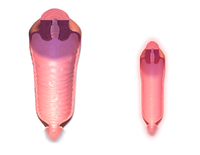
Photo from wikipedia
Study Design Retrospective study. Purpose To evaluate how motor, sensory, and urinary outcomes of spinal cord injury (SCI) patients were influenced in the long term. Overview of Literature SCI is… Click to show full abstract
Study Design Retrospective study. Purpose To evaluate how motor, sensory, and urinary outcomes of spinal cord injury (SCI) patients were influenced in the long term. Overview of Literature SCI is a potentially disabling and devastating neurological outcome that can occur because of spinal column fractures. Most studies have not evaluated or have failed to show the influence of different surgical approaches and other parameters on neurological recovery. Methods A thorough history regarding sensory, motor, and urinary complaints was taken from 103 patients with SCI due to vertebral fracture; patients were followed by a thorough neurological examination. Subsequently, all medical records of patients, including neurological state after trauma, trauma mechanism, treatment protocol, surgical protocol, and imaging findings, were evaluated. Results Of the 103 patients, 73.8% were survivors of a major earthquake and 26.2% were victims of vehicle accidents; 92.2% patients were surgically treated, while 7.8% underwent conservative management. The mean follow-up duration was 10.3 years. In follow-up visits, 67.0%, 12.6%, 13.6%, and 6.8% patients showed no, partial, substantial, and complete motor improvement, respectively; 68.0%, 26.2%, and 5.8% showed no, mild, and substantial sensory improvement, respectively; and 73.8%, 17.5%, and 8.7% showed no, substantial, and complete urinary improvement, respectively. Logistic regression analysis showed that sex, age at injury time, follow-up duration, trauma mechanism, and stem cell therapy had no effect on motor, sensory, and urinary improvement. Higher initial scores on the American Spinal Injury Association (ASIA) classification, lumbar fracture level, and performance of laminectomy improved motor outcome; higher initial ASIA scores improved urinary and sensory outcomes. Conclusions The initial ASIA score is the most important factor for prognosticating motor, sensory, and urinary improvement in SCI patients. Lumbar (L3–L5) and thoracic (T1–T10) fractures have the best and worst prognosis, respectively, in terms of motor recovery. Laminectomy during surgery improves motor function.
Journal Title: Asian Spine Journal
Year Published: 2017
Link to full text (if available)
Share on Social Media: Sign Up to like & get
recommendations!